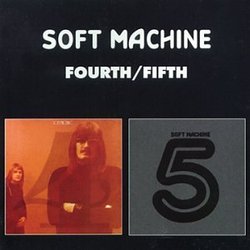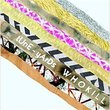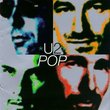| All Artists: Soft Machine Title: 4th & 5th Members Wishing: 6 Total Copies: 0 Label: Columbia Europe Release Date: 3/29/1999 Album Type: Import Genres: Jazz, Special Interest, Pop, Rock, Classic Rock Styles: Experimental Music, Progressive, Progressive Rock, Psychedelic Rock Number of Discs: 1 SwapaCD Credits: 1 UPCs: 5099749334120, 766485065520 |
Search - Soft Machine :: 4th & 5th
 | Soft Machine 4th & 5th Genres: Jazz, Special Interest, Pop, Rock, Classic Rock
Digitally remastered reissue with their 1971 & 1972 albums, respectively, together on one CD. A combined total of 14 tracks. Also features the original cover art. 1999 release. |
Larger Image |
CD DetailsSynopsis
Album Description Digitally remastered reissue with their 1971 & 1972 albums, respectively, together on one CD. A combined total of 14 tracks. Also features the original cover art. 1999 release. Similarly Requested CDs
|
CD ReviewsThe sound of a band in transition Andrew Callaghan | Brisbane, Queensland, Australia | 10/27/2000 (4 out of 5 stars) "Soft Machine's albums from THIRD (1970) through to SIX (1973) are of a transitional nature and see the band moving from psychedelia to fusion via avant garde and free form structures. 4 was originally released in February 1971 and continues where THIRD left off. It is the first Soft Machine album to be entirely instrumental. It is the last Soft Machine album to feature Robert Wyatt on drums and the first to feature Roy Babbington on bass (although he did not become an official member of the band until SEVEN). Nick Evans (trombone) and Jimmy Hastings (alto flute, bass clarinet) also reappear from the THIRD line-up, and Marc Charig (cornet) and Alan Skidmore (tenor saxophone) make their debut. The standout tracks are those contributed by bassist Hugh Hopper. His four-part 'Virtually' suite originally filled Side 2 of the album (tracks 4 to 7 on this CD).5, originally released in June 1972 continued the move towards jazz-rock. This album features Robert Wyatt's successors on drums, Phil Howard and John Marshall. Elton Dean broadens his instrumental scope to include electric piano, as well as his favoured alto saxophone and saxello. Roy Babbington appears again on Side 2 of the original album (tracks 11 to 14). Howard drums on Side 1 (tracks 8 to 10) and Marshall on Side 2 (tracks 11 to 14). Marshall's performance is an ear-opening tour-de-force and gives hints of the band's further steps towards fusion. He really makes you sit up and take notice after Howard's performance. The best compositions this time around come from the pen of Mike Ratledge, and include the beautiful 'Drop' (which features dripping water recorded excellently over the stereo picture: try it on headphones!). This was Elton Dean's final appearance with Soft Machine." Architecture thawed vxppl | GA United States | 08/13/2002 (5 out of 5 stars) "Since their release in 1971&2, 4 & 5 were my least favorite Softs, and for years I ignored them. Big mistake, but I was young. Then I found an Italian cassette compiliation with Teeth, put the tape into the car player and was blown away. I was finally ready for these demanding tunes.Most rock/pro/prog/jazz pieces that excite the listener do so through their spontaneity and energy. Classical compositions usually achieve their effect through structure and discipline. (There are many exceptions--Robert Fripp, John Cage e.g.--and of course all music worth hearing has some of both). Teeth, though, achieves a perfect balance of form and freedom, measure and passion--partly in Ratledge's composition, partly in the superlative playing of the group. The other compositions on 4 are also _____ (does "superlative" have a superlative form?), though they tend a bit more toward order (Hopper's tunes) or free-form (Dean's). 5's also wonderful but a bit colder, anticipating the icily perfect surfaces of 6.This review is awfully vague, but these albums are so musical that I feel like a pre-teen babbling in a Britney chat room when I try to describe them. So just buy the CD and play it a bunch so that it can get into your subconsciousness. Then dismiss my hyperbolic adolescent fawnings and put the CD in a time capsule. Listen to as much music as you can for a couple of decades. Finally, open the capsule and play Teeth. You'll see what I mean." Fierce instrumental genius in between psychedelic haze IRate | 05/24/2006 (4 out of 5 stars) "At times ripping deeper then most fusion jams ever dare go, the overall effects are again sometimes weighed down by the reluctant lulls of drugged out, less inspired distortionesque improv- even so, which is demonstrated with more eloquence then in future releases. With these two seminal albums fused together though, one can hardly pause from admiring the daunting collaborations each band member intuitively made in order to synchronize some of the most jazzily adept experimental rock music ever laid down. Some of it's slower(free-form) parts may alienate the melodic minded, sober listener, although it would be a crime to not own this compilation if at all one is instrumentally inclined."
|

 Track Listings (14) - Disc #1
Track Listings (14) - Disc #1




